Introduction
Hippie style refers to a distinctive fashion and cultural aesthetic that emerged during the 1960s counterculture movement. Rooted in ideals of peace, love, and freedom, it symbolizes rebellion against societal norms through eclectic clothing, natural fabrics, and free-spirited silhouettes. Flowing dresses, tie-dye patterns, fringe details, and handcrafted accessories define this laid-back yet bold look, often reflecting a desire for harmony with nature and personal authenticity.
Radiating an effortlessly cool vibe, hippie style continues to captivate hearts across generations. Its carefree energy and vibrant expression have made it a go-to inspiration for music festivals, streetwear, and high fashion alike. Whether it’s the nostalgic charm of the Summer of Love or the modern twist of boho-chic, this look turns heads with its unapologetic individuality and deep cultural roots.
Today’s resurgence of hippie fashion isn’t just a trend—it’s a revival of conscious living, artistic flair, and self-expression. From sustainable materials to spiritual undertones, this iconic style invites wearers to embrace creativity, reject conformity, and celebrate a timeless ethos that feels as relevant now as it did decades ago.
Defining the Hippie Movement (1960s-1970s)
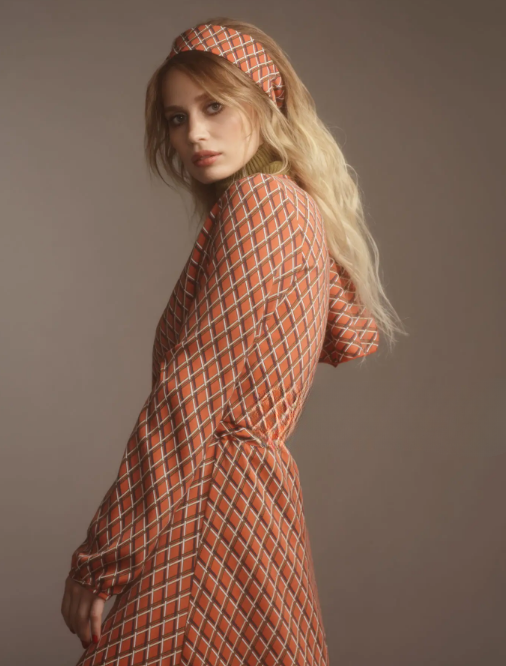
The hippie movement emerged during a period of unprecedented social upheaval. The Vietnam War raged on, civil rights battles intensified, and environmental concerns grew. Young people questioned the materialistic values and rigid social structures their parents embraced during the conservative 1950s.
Peace, love, and freedom weren’t just slogans—they formed the philosophical foundation of the hippie lifestyle. These values translated directly into clothing choices that prioritized comfort, self-expression, and rejection of establishment norms.
“The hippies represented a genuine response to an oppressive social order. Their clothing wasn’t just fashion—it was a declaration of independence.” – Todd Gitlin, sociologist and former president of Students for a Democratic Society
Unlike today’s carefully curated aesthetics, early hippie style developed organically as a reflection of alternative values:
- Anti-consumerism: Choosing secondhand and handmade over mass-produced
- Anti-war sentiment: Peace symbols and military jackets repurposed as ironic statements
- Sexual liberation: Unrestricted silhouettes and body-celebrating designs
- Environmental awareness: Natural materials and minimal waste
- Spiritual exploration: Incorporating elements from Eastern philosophies and indigenous cultures
This wasn’t merely about looking different—it was about being different, with clothing serving as the most visible expression of a comprehensive worldview that challenged virtually every aspect of mainstream American life.
The Birth of Iconoclastic Style
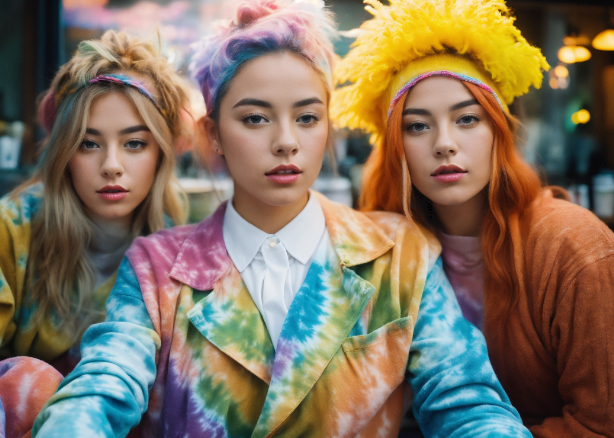
The epicenter of hippie culture was undoubtedly San Francisco’s Haight-Ashbury district, where young idealists gathered to create alternative communities. During the legendary Summer of Love in 1967, thousands of youth descended on the neighborhood, bringing diverse influences that would crystallize into the iconic hippie look.
Financial necessity played a crucial role in early hippie fashion development. Most adherents were young people with limited funds who sourced clothing from:
| Source | Aesthetic Contribution |
|---|---|
| Army surplus stores | Military jackets, canvas bags |
| Thrift shops | Vintage dresses, worn denim |
| Flea markets | Ethnic textiles, handcrafted jewelry |
| Home sewing | Personalized, upcycled garments |
The breakthrough moment came during the Woodstock Music Festival in 1969, which showcased hippie style on an unprecedented scale. For three days, nearly half a million people gathered in muddy fields wearing fringed vests, flowing skirts, and flower crowns—creating indelible images that would influence fashion for generations.
What made hippie style so revolutionary was its deliberate rejection of the structured, gender-segregated fashions that preceded it. The cinched waists, structured undergarments, and rigid gender distinctions of 1950s fashion gave way to free-flowing fabrics and unisex options that celebrated the natural body and blurred gender boundaries.
Essential Elements of Authentic Hippie Fashion
The bohemian style that defined hippie fashion wasn’t random—it comprised specific elements chosen for both practical and philosophical reasons:
Natural Fabrics
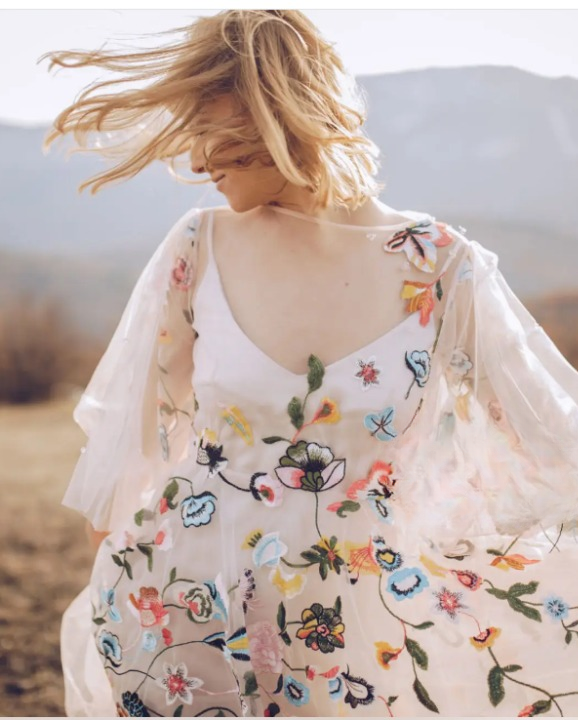
Hippies embraced natural fabrics like cotton, hemp, and linen that:
- Reflected environmental values
- Provided comfort during long days of activism
- Aged beautifully, developing character over time
- Could be easily dyed and manipulated
Signature Garments
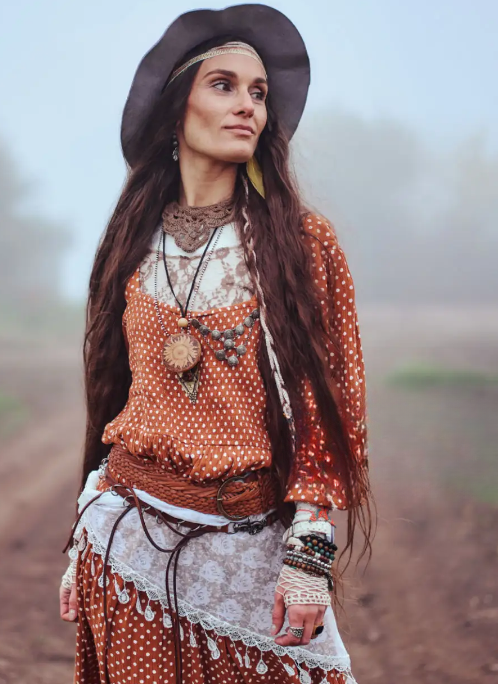
Several iconic pieces defined the hippie silhouette:
- Bell-bottoms: These wide-legged pants symbolized freedom from restriction and became an instant identifier of counterculture participation.
- Flowing dresses: Often made from repurposed textiles or lightweight Indian cottons, these comfortable, unstructured garments celebrated natural body forms.
- Fringed jackets: Borrowing from Native American designs, these statement pieces added movement and texture to outfits.
- Tie-dye clothing: This DIY fashion technique created unique, colorful patterns that couldn’t be mass-produced, ensuring individual expression.
Meaningful Accessories
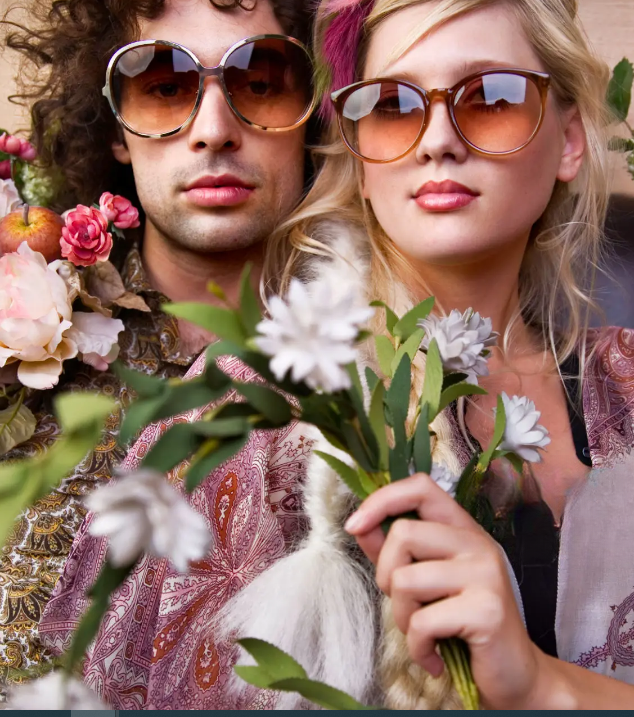
Accessories weren’t merely decorative—they carried symbolic weight:
- Headbands and bandanas: Kept long hair in place while referencing indigenous cultures
- Peace medallions: Clear political statements against war
- Handcrafted beads: Rejection of mass-produced luxury goods
- Leather pouches: Practical alternatives to conventional wallets
Color Philosophy
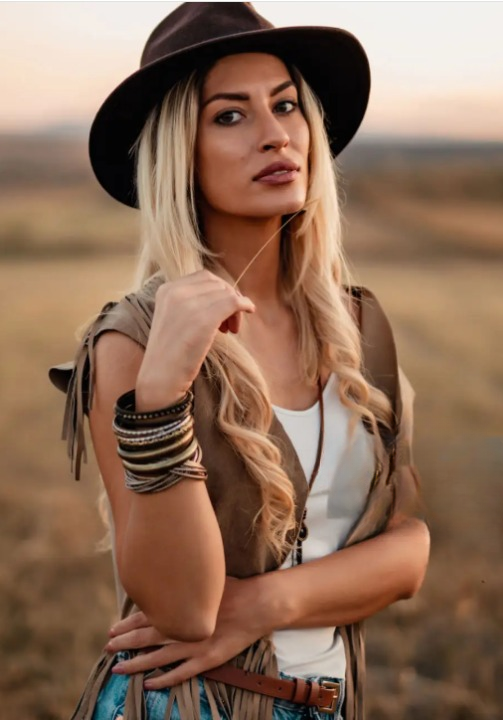
The hippie palette wasn’t arbitrary. Earth tones connected wearers to nature, while psychedelic colors reflected expanding consciousness through spiritual and sometimes chemical exploration.
Global Influences on Hippie Style
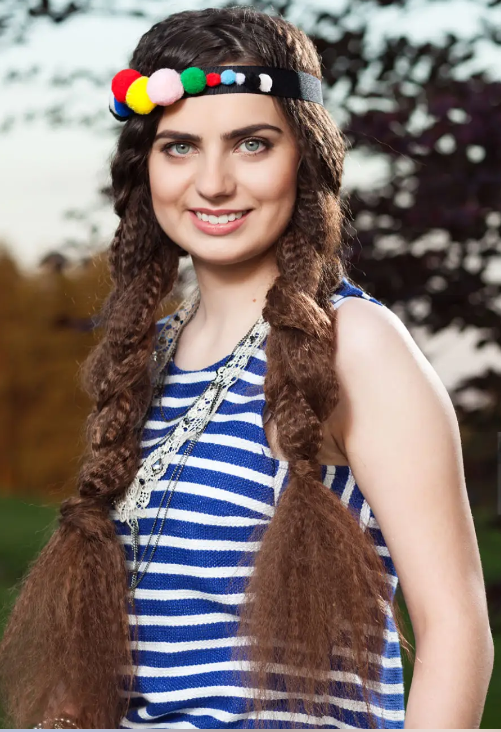
One of the most remarkable aspects of hippie fashion was its global character, incorporating elements from cultures around the world at a time when international travel was becoming more accessible to young Americans.
Indian influences dominated, with imports from the subcontinent bringing:
- Intricate paisley patterns
- Lightweight cotton fabrics
- Mirror-work embroidery
- Spiritual symbolism like mandalas and om signs
Mexican and Native American elements added distinctive character:
- Vibrant embroidery techniques
- Turquoise and silver jewelry
- Moccasins and leather work
- Poncho silhouettes
North African and Middle Eastern contributions included:
- Moroccan leather goods
- Kaftans and djellabas
- Layering techniques
- Metallic embellishments
“The hippie aesthetic represented one of the first truly global fashion movements, drawing inspiration from traditional cultures while creating something entirely new.” – Amy de la Haye, fashion historian
This cross-cultural borrowing raises important questions about cultural appreciation versus appropriation. While hippies genuinely admired and sought to honor these traditions, they sometimes lacked deep understanding of the cultural significance behind the elements they adopted. Today’s modern interpretation of hippie style tends to be more conscious of these dynamics, seeking ethical sourcing and proper attribution.
Music as Fashion Catalyst

The relationship between psychedelic music and hippie fashion was symbiotic—each influencing and reinforcing the other. Musicians didn’t just perform in hippie clothes; they helped define the aesthetic through their distinctive personal styles.
Influential Artists
| Artist | Fashion Contribution |
|---|---|
| Janis Joplin | Layered bohemian jewelry, mixed prints, feather boas |
| Jimi Hendrix | Military jackets, headbands, bold patterns |
| Grateful Dead | Tie-dye innovation, skeleton motifs, earthy tones |
| Jefferson Airplane | Victorian-meets-psychedelic aesthetic, velvet |
| Joni Mitchell | Prairie dresses, natural hair, minimal adornment |
Festival Evolution
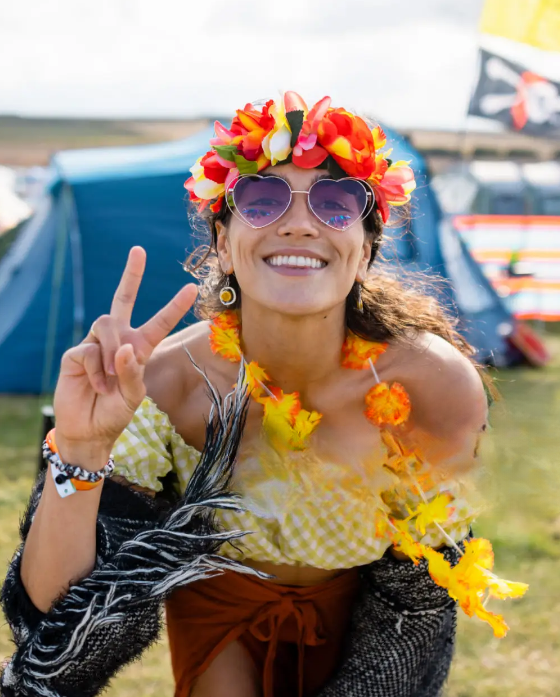
Music festivals served as both showcase and laboratory for hippie fashion. The progression from Woodstock to today’s Coachella fashion reveals how the core elements have evolved while maintaining their essential spirit:
- 1969 Woodstock: Improvised, authentic, weather-adapted styles
- 1970s festivals: More refined but still handcrafted looks
- 1990s revival: Grunge-influenced hippie style with modern fabrics
- 2000s festivals: Designer-influenced boho chic with higher price points
- 2010s-present: Carefully curated vintage and modern festival fashion documented on social media
Album art deserves special mention as a significant influence on hippie textiles. Artists like Peter Max and Rick Griffin created psychedelic imagery that would inspire fabric designs, while album covers themselves became templates for T-shirt graphics and fashion motifs.
Fashion Icons Who Defined the Movement
While many associate hippie style with anonymous crowds at festivals, certain individuals emerged as particularly influential in defining and spreading the aesthetic.
Musical Style Leaders
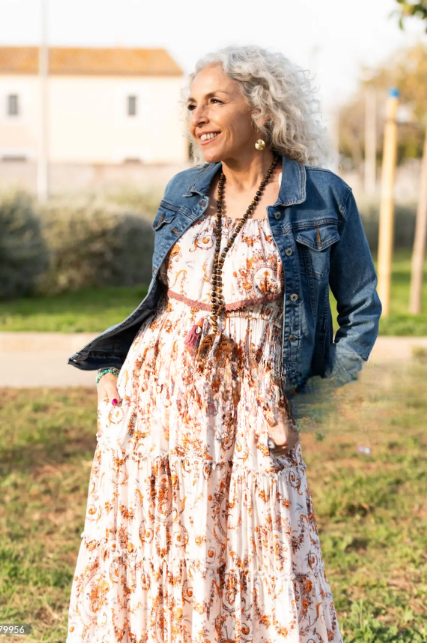
Janis Joplin epitomized hippie fashion with her distinctive combination of vintage pieces, feathers, and bold accessories. Her fearless mixing of patterns and textures created a template that many would follow.
Jimi Hendrix transformed military garments into psychedelic statements through customization, showing how establishment symbols could be subverted through creative recontextualization.
Non-Musician Innovators
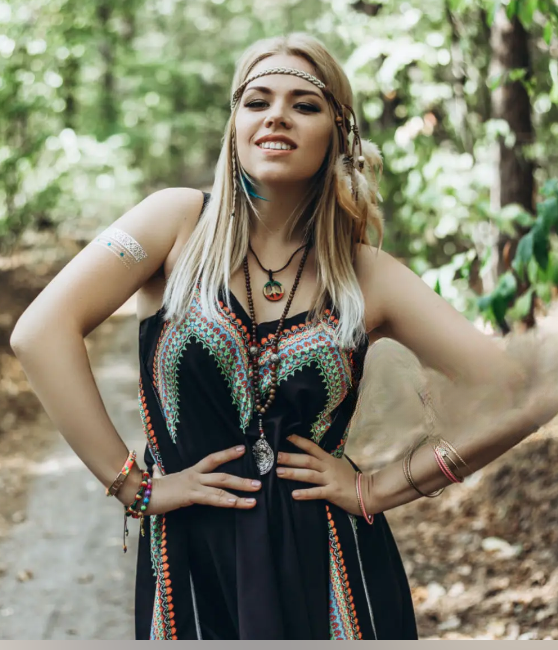
Jane Birkin brought French sophistication to hippie basics, creating a more minimalist interpretation that would influence future bohemian aesthetic trends.
Model Twiggy demonstrated how mod and hippie elements could blend, particularly as the 1960s progressed into the 1970s.
Film’s Role

Movies both documented and popularized hippie fashion:
- “Easy Rider” (1969) showcased rugged hippie style for men
- “Hair” (1979) brought theatrical interpretations to mainstream audiences
- “Woodstock” documentary (1970) provided authentic reference points
Styling Tip: To channel authentic hippie style icons, focus on personality rather than perfection. Their looks were expressive and unique rather than carefully coordinated.
The Cyclical Revival Phenomenon
Hippie style has experienced multiple resurgences, each reinterpreting core elements for contemporary sensibilities.
The 1990s Revival

Grunge musicians and fashion designers rediscovered hippie aesthetics, incorporating:
- Vintage floral prints
- Layered slip dresses
- Combat boots with flowing fabrics
- Hemp jewelry and accessories
This revival coincided with growing environmental awareness, connecting once again to the movement’s original values.
The 2010s Resurgence
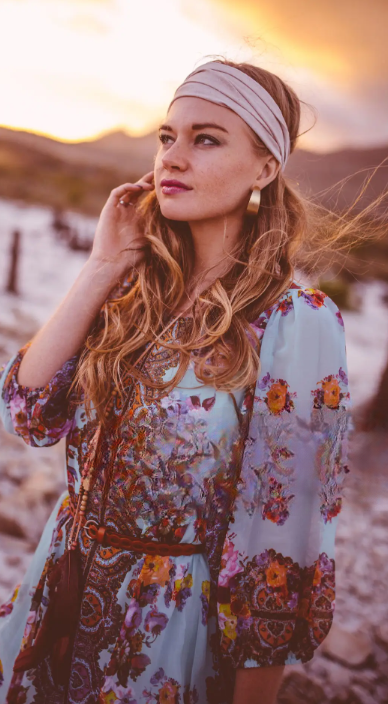
Social media and festival culture fueled another major revival, characterized by:
- Higher-end interpretations from brands like Free People
- Vintage-sourcing becoming mainstream
- DIY culture through platforms like Pinterest and Instagram
- Eco-friendly clothing connections
Gen Z Enthusiasm

Today’s youngest consumers have embraced hippie fashion with unexpected fervor, attracted by:
- Sustainability alignment: Vintage and secondhand shopping reduces fashion’s environmental impact
- Gender fluidity: The non-binary nature of hippie clothing resonates with contemporary gender expressions
- Authenticity search: Handmade and personalized items offer alternatives to fast fashion
- Digital hippie communities that share techniques and sources online
Case Study: Denim Evolution The journey of bell-bottoms illustrates how hippie styles evolve through revivals:
- 1960s: Actual Navy surplus or handmade bells
- 1970s: Mass-produced flares become mainstream
- 1990s: Wider versions return as “elephant bells”
- 2010s: More tailored flares with higher waists
- 2020s: Sustainably produced wide-leg designs
Modern Hippie Style Reimagined
Contemporary interpretations of hippie style maintain core philosophical elements while adapting aesthetics for today’s sensibilities.
Sustainable Fashion Connection

The original hippie values of environmental consciousness find perfect expression in today’s sustainable fashion movement:
- Organic and regeneratively grown fibers
- Natural dyeing techniques
- Zero-waste pattern cutting
- Garment longevity and repairability
- Ethical labor practices
“The hippies were ahead of their time—they understood that our relationship with clothing needed to be more thoughtful and less exploitative.” – Stella McCartney, designer known for sustainable practices
Luxury Interpretations
High-end designers regularly incorporate hippie elements:
| Designer | Hippie-Inspired Elements |
|---|---|
| Gucci | Psychedelic prints, layered bohemian looks |
| Dolce & Gabbana | Embroidered denim, peasant tops |
| Dior | Tie-dye techniques, handcrafted details |
| Etro | Paisley patterns, global textile references |
Fast Fashion vs. Slow Fashion

Mass-market brands like Urban Outfitters offer accessible hippie-inspired pieces, but often miss the movement’s ethical dimensions. Slow fashion alternatives better honor the original philosophy by:
- Using natural, sustainable materials
- Paying fair wages to artisans
- Creating durable, timeless designs
- Providing transparency in production methods
How to wear: When incorporating hippie elements into a modern wardrobe, focus on quality over quantity. A single well-made, handcrafted piece carries more authentic hippie spirit than multiple mass-produced imitations.
The Lifestyle Beyond the Look
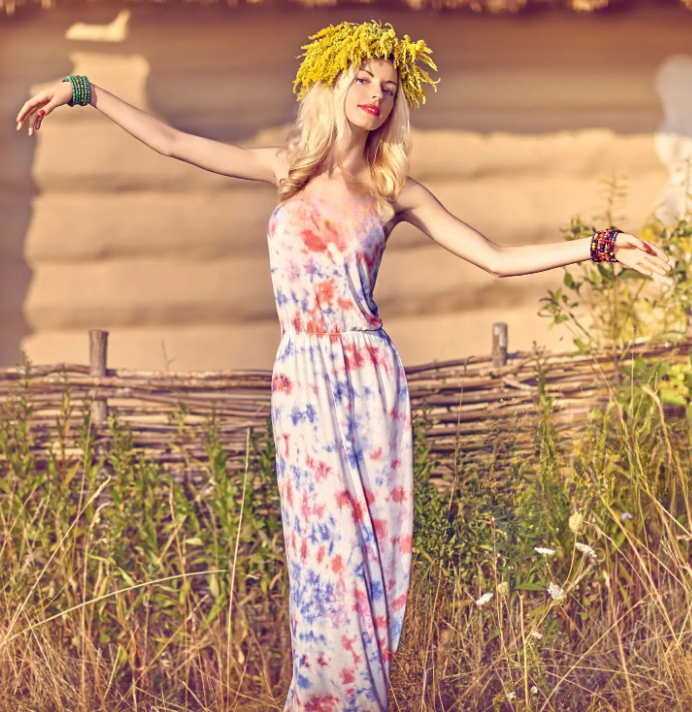
True hippie style has always been more than clothing—it’s part of a comprehensive approach to living that challenges conventional values.
Contemporary Applications
Many original hippie practices have entered the mainstream:
- Spirituality and meditation as everyday wellness practices
- Plant-based eating and organic food awareness
- Environmental consciousness and activism
- Holistic approaches to health and healing
Living Spaces
The hippie influence extends to home design through:
- Indoor plants and natural materials
- Handcrafted textiles and global influences
- Open, flexible living arrangements
- Upcycled and vintage furnishings
Community Concepts
Modern interpretations of collective living include:
- Co-housing developments
- Intentional communities
- Urban communes
- Digital nomad collectives
Accessories: To authentically accessorize in hippie style, focus on natural materials jewelry with personal meaning rather than mass-produced decorative items.
DIY Guide to Authentic Hippie Style

Creating your own hippie fashion items connects you to the movement’s original DIY ethos.
Sustainable Sourcing
Where to find authentic pieces:
- Vintage stores specializing in 1960s-1970s clothing
- Estate sales in neighborhoods with aging hippie populations
- Ethical brands that honor hippie principles
- Artisan marketplaces like Etsy for handcrafted items
Creating Personal Items
Basic tie-dye technique:
- Gather 100% natural fiber garments (cotton works best)
- Create patterns through folding, twisting, or binding
- Apply fiber-reactive dyes in desired colors
- Allow to set according to dye instructions
- Rinse thoroughly and wash separately first few times
Simple embroidery embellishments:
- Peace symbols
- Floral motifs
- Celestial designs
- Geometric patterns
Building a Hippie-Inspired Wardrobe
Essential pieces:
- One quality pair of flared or bell-bottom jeans
- A flowing maxi dress or skirt
- A fringed vest or jacket
- Several simple cotton tops for layering
- A selection of scarves for multiple uses
Styling Tips:
- Layer pieces of varying lengths for dimension
- Mix patterns thoughtfully—florals with stripes or paisleys
- Incorporate at least one handcrafted element in each outfit
- Use natural materials whenever possible
- Choose comfort over restriction
The Digital Hippie Movement
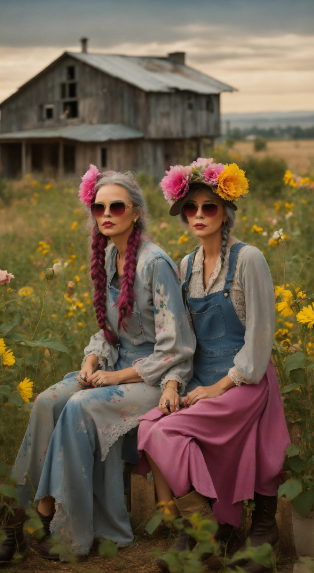
The internet has transformed how hippie style is shared, learned, and practiced, creating new forms of community despite physical distance.
Virtual Communities
Online spaces have revitalized interest in hippie practices:
- YouTube channels teaching traditional crafts
- Instagram accounts showcasing vintage collections
- TikTok trends reintroducing tie-dye and crochet
- Reddit communities sharing sustainable living tips
Key Influencers
Social media influencers promoting authentic hippie values include those focused on:
- Vintage fashion curation
- Plant-based living
- Sustainable fashion practices
- Modern interpretations of hippie spirituality
- Traditional craft preservation
Digital Marketplaces
Online platforms have made authentic hippie items more accessible:
- Etsy for handcrafted and vintage pieces
- Depop for curated secondhand
- Specialized vintage dealers with Instagram shops
- Direct relationships with global artisans
These digital connections help maintain hippie traditions while adapting them for contemporary life, ensuring techniques and knowledge aren’t lost between generations.
Future Trajectory of Hippie Fashion

Hippie style continues to evolve, with emerging trends suggesting exciting new directions:
Technological Integration
- Solar-powered charging elements in clothing
- Sustainable tech fabrics with natural aesthetics
- AR experiences expanding customization possibilities
- Digital crafting tools making traditional techniques more accessible
Predicted Developments
Industry forecasters anticipate:
- More sophisticated plant-based leathers and dyes
- Revival of regional textile traditions through global collaboration
- Gender-neutral hippie options becoming mainstream
- Increased focus on clothing repair and transformation
Gen Alpha Influence
The youngest generation is likely to interpret hippie fashion through lenses of:
- Climate urgency
- Digital-physical integration
- Global cultural exchange
- Anti-consumerist practices
What remains constant is how hippie style continues to offer alternatives to mainstream fashion while adapting its core values for contemporary challenges.
Conclusion
Hippie style is more than just fashion. It shows a way of life that values peace, freedom, and love. With its flowing clothes, bold colors, and natural materials, hippie style lets people express who they are. It brings comfort, beauty, and meaning into everyday outfits. This look is perfect for those who want to feel free and stay close to nature.
Today, hippie style is still loved by many. It mixes old traditions with modern fashion in a fresh way. From music festivals to street fashion, it continues to inspire new trends. Whether you wear tie-dye shirts or add handmade jewelry, hippie style helps you stand out. It’s a style that celebrates the spirit of being yourself.
FAQ Section
Q: What defines authentic hippie style versus costume or fashion trend? A: Authentic hippie style comes from embracing the values behind the fashion—sustainability, individuality, and consciousness. It’s not about perfectly matching vintage photos but about incorporating elements mindfully while honoring their origins.
Q: Where can I find ethically-sourced hippie-inspired clothing? A: Look for brands that emphasize transparency in production, natural materials, fair labor practices, and artisan partnerships. Companies like Christy Dawn, Reformation, and Amour Vert offer eco-friendly clothing with hippie elements.
Q: How can I incorporate hippie elements into professional attire? A: Focus on subtle elements like natural fabrics, understated earth tones, minimalist handcrafted jewelry, or a single statement accessory. A tailored jacket in a natural fabric over a simple shell offers bohemian style influence while maintaining professionalism.
Q: Which current designers best represent modern hippie aesthetics? A: Designers like Isabel Marant, Ulla Johnson, and smaller labels like Dôen create clothing that honors hippie influences through natural fabrics, handcrafted details, and ethical production—updating the bohemian aesthetic for contemporary lifestyles.
Q: Is wearing traditional items from other cultures as hippie fashion cultural appropriation? A: Context and intention matter. Purchasing directly from artisans, understanding the significance of designs, giving proper attribution, and avoiding sacred or ceremonial items shows respect. The global fashion influences in hippie style should acknowledge their origins.




